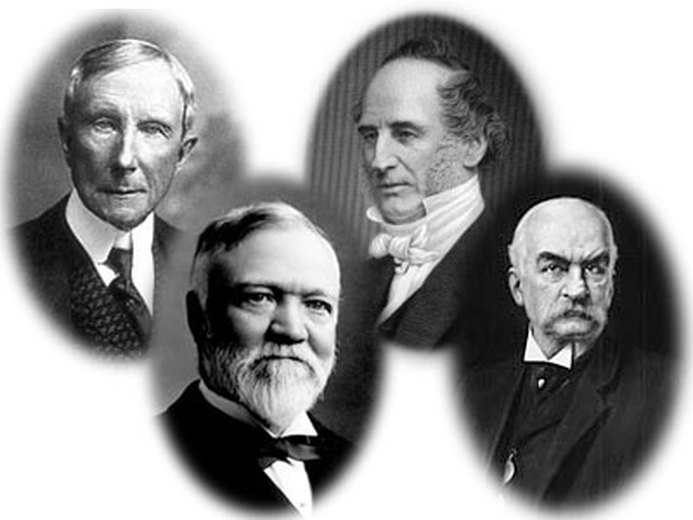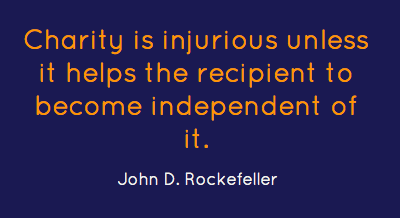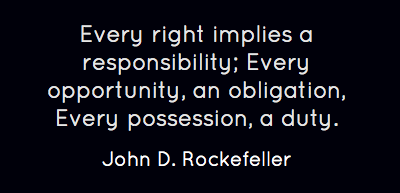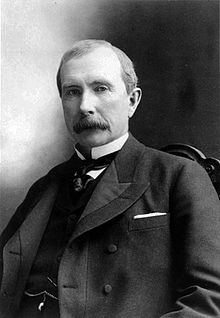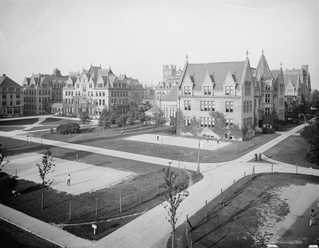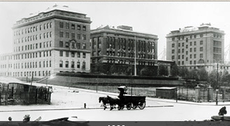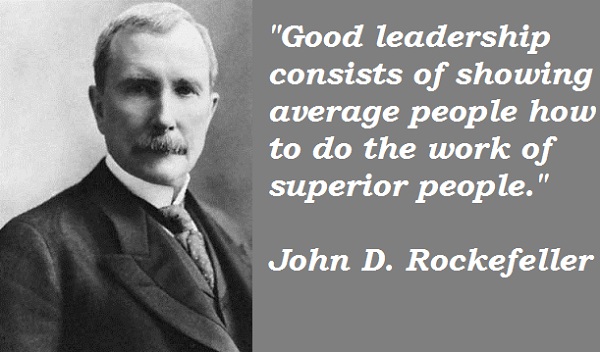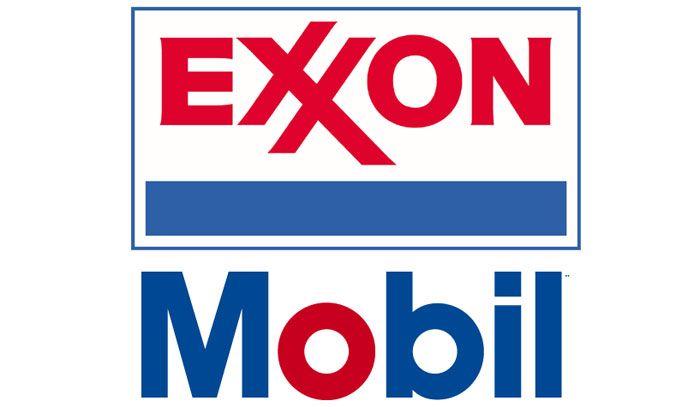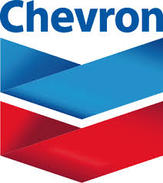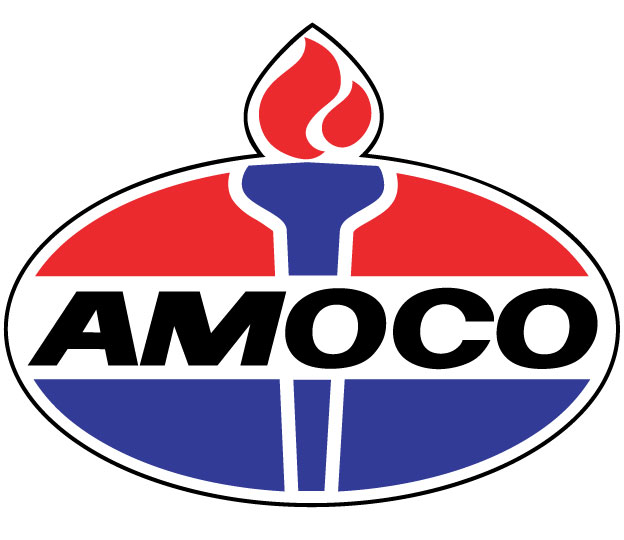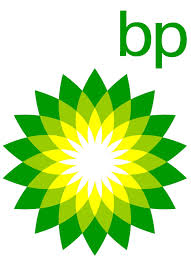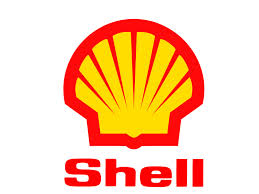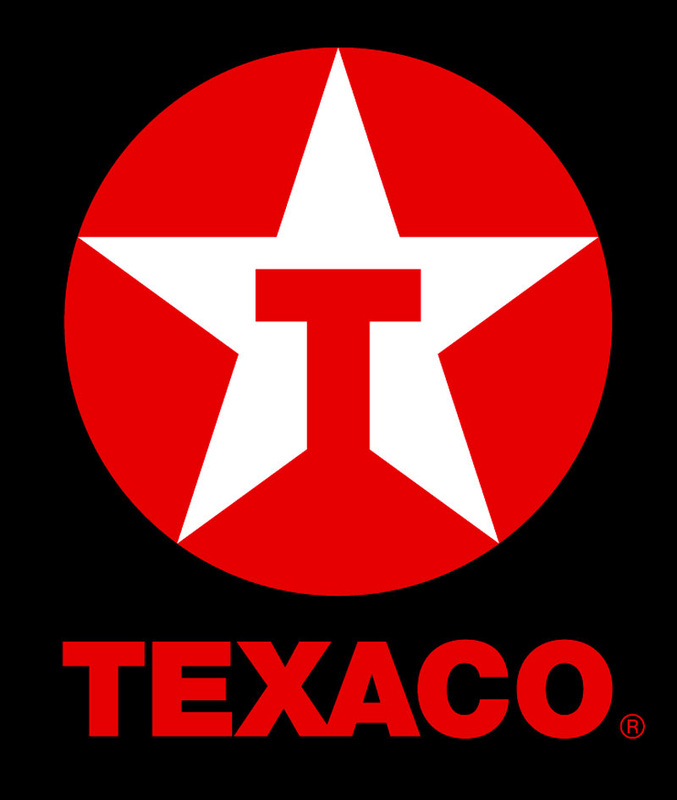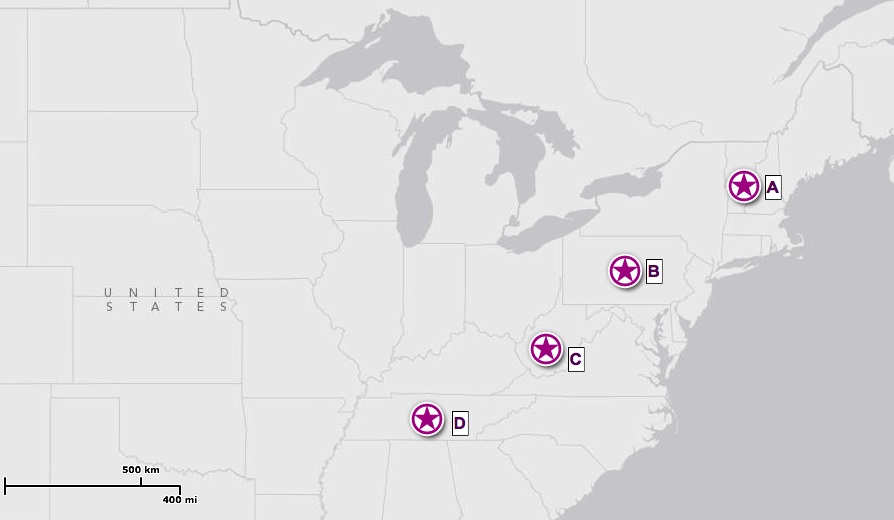Focus Activity - Determining a Purpose for Reading
Lesson Outcome

Outcomes are what you (the student) will be able to do after the lesson is over.
I can describe the part John D. Rockefeller played in the Gilded Age of U.S. History.
I can describe the part John D. Rockefeller played in the Gilded Age of U.S. History.
Why is this an Outcome?

Every state has a set of standards for students to achieve in each class and grade. They set these goals so that when you graduate, you will slowly have built up everything you need to know to be ready for your career or for college. We have the lesson outcome above because we are working to meet one of the standards set by the Alabama Department of Education. It will take several topics and many lessons to meet each state standard. The standard we are working to meet now is:
Alabama State Social Studies Standard 1: Explain the impact of industrialization, urbanization, communication, and cultural changes on life in the United States from the late nineteenth century to World War I.
Alabama State Social Studies Standard 1: Explain the impact of industrialization, urbanization, communication, and cultural changes on life in the United States from the late nineteenth century to World War I.
Teaching Activity - Outlining Informational Text
Before, During, and After a Reading
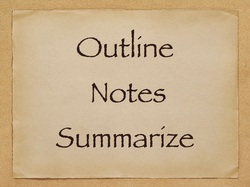
In this activity, you will learn how to set up a framework for reading informational text before you read; how to outline informational text while reading; and how to summarize the important things you outlined.
- First, create a Skeleton Outline by recording all the headers on the page.
- Second, fill in any people, places, events, vocabulary, or major ideas covered in each section under the section title. (Remember P.P.V.E.A - People, Places, Vocabulary, Events, and Annotations).
- Third, summarize the outline in a paragraphs in your own words.
John D. Rockefeller |
Tool Box |
Oil in Pennsylvania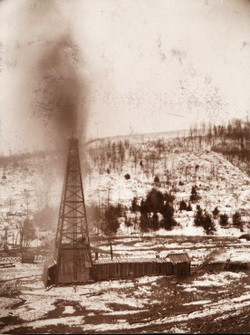 Oil derrick in Warren County, PA 1890
In 1858, a small - time prospector named Edwin Drake sank a hole 70 feet into the ground near Titusville, Pennsylvania. Black slime soon filled the hole. That slime was oil. When the news got out, people raced for the hills and gullies of western Pennsylvania. Before long, that state was a wild and hurly - burly place - something like California in the Gold Rush in the decade earlier. Trees went down and derricks went up. Oil wells caught fire and black, smelly fumes filled the air. Railroads pushed in, towns sprouted like dandelions - and disappeared just as fast. Pithole, Pennsylvania (which was well named) had a hotel that cost $65,000. When the prospectors left, the hotel sold for $50.
A Bookkeeper Comes to Town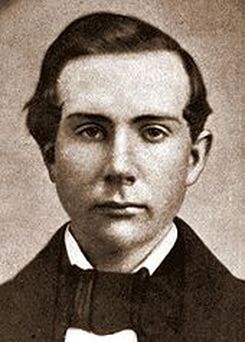 Rockefeller age 18 in 1857
One day a quiet, young bookkeeper was sent to this disorganized area to see what was going on. "Is the oil business worth investing in?" His employers had sent him to find out. "No," he told them, and then went on to invest in it himself and to become one of the most successful businessmen the world had ever known. His name was John D. Rockefeller.
Rockefeller's Scottish Baptist mother had raised him to be orderly, hardworking, and exact. Once, he and his brothers went skating on a frozen river. They were not supposed to do that, but they saved the life of a boy who fell through the ice. When their mother heard what they had done, she praised them for their courage and then whipped them for their disobedience. The boys were encouraged to work. John raised turkeys and raised $50. When a neighbor asked to borrow the $50 he lent the money - and charged $3.50 in interest! It was a lesson he never forgot: money could be made to earn money. That is what capitalism is all about. Some say John D. Rockefeller was the greatest capitalist that ever lived. Others say that he almost destroyed capitalism for everyone else in America. Sneaky Rockefeller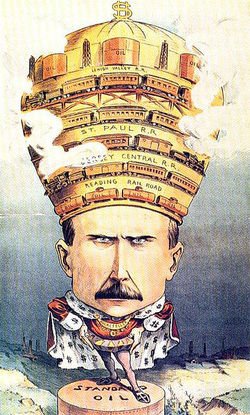 Puck Magazine Political Cartoon 1901
One thing is certain. He soon brought order to that disorderly oil business. But not by being a prospector. He could see that the money to be made was in oil refining. In 1863 - he was 24 - he and a partner bought a small refinery. With his efficient methods, it quickly grew large. Rockefeller began buying his competitors.
If you have oil to sell, there are two costs that are important: the cost of the oil and the cost of transportation (because you need to get the oil to buyers). Because there were competing railroads, and because he had quite a bit of oil to ship, Rockefeller made the railroads give him special prices to ship his oil. Actually, what he did was pay the full price like everyone else. Then he got the railroads to give him back half of what he had paid. He did that secretly. It was called a rebate or "kickback," and it wasn't fair. It meant he could charge less for his oil than his competitors did. Soon, he put most of them out of business. Within 10 years he controlled the nation's oil industry. Amazing Success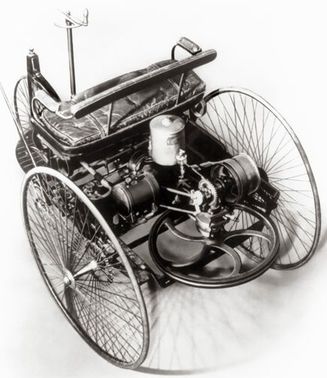 one of the first automotive internal combustion engines
The oil business was very lucrative, which means there were big profits to be made. Rockefeller's company, Standard Oil, became spectacularly rich. Which seems amazing to us today is that all of this happened before the internal combustion engine. The internal combustion engine powers automobiles and other machines that made oil so important in the 20th century. The oil that brought hundreds of millions of dollars to Rockefeller was used mostly to light kerosene lamps (in those days before the electric light).
Good or Bad? What kind of man do you think Rockefeller was?
The more you learn about John D. Rockefeller, or history in general, the more you will see how hard it is to make judgments - good and bad have a way of getting mixed together. You can decide for yourself what to think of him.
In the 19th century, many people thought Rockefeller was one of the great villains of all time. His bookkeeper's mind seemed interested only in money and profits, not in people. When he put others out of business it didn't bother him at all, as long as it made profits for Standard Oil. That company was called the "greatest, wisest, and meanest monopoly known to history." Rockefeller soon had vast interests in many businesses, not just oil, and the less he paid his workers the more efficient the business seemed. When some miners tried to form unions, he shut down the mines and actually let workers starve rather than pay them fair wages. His strikebreaking troops shot and killed workers and families in mining towns in Colorado. Rockefeller claimed he did not know what was going on - but he did. After the turn of the century, laws were passed that helped to prevent unfair business practices, but, until that happened, tycoons like Rockefeller, sometimes behaved as if they were kings. John D. Rockefeller had a quiet, dignified manner, but his company acted like a big, tough, bully - beating up anyone who tried to fight it.
Spindletop - A Great Black Gusher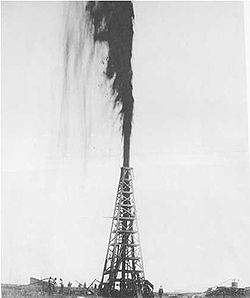
Everyone knew there was oil in Texas. When oil had seeped to the ground's surface, Indians used it to heal wounds. Members of the explorer Hernando De Soto's expedition back in 1542, had found Texas asphalt (a thick, paste like form of petroleum) useful for repairing their ships. In the early 19th century, several pioneers drilled and found oil.
By the 1880s and 1890s, Texans had tapped many small oil wells and brought in drilling machinery, storage tanks, and pipelines. It was the beginning of the oil industry. Then Patillo Higgins and Anthony F. Lucas drilled a test well at a place called Spindletop, near Beaumont. Early in the morning of January 10, 1901, they heard a roaring sound. The drill pipe lifted straight out of the earth, like a rocket. Then came the oil, surging up 160 feet high. It took ten days just to get the stuff under control. The oil men were soon filling as many as 100,000 barrels a day at Spindletop. The Texas oil boom had begun. Team Activity - Applying the ReadingRockefeller Timeline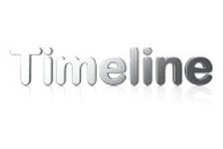
In this activity you will work together to create a timeline of John D. Rockefeller's life and the history of U.S. Oil using the reading above. Click on the picture icon to the left to create the timeline. Each group member will create a timeline. Your timeline will look the same as your group's. You will have to do math to figure out some of the years using clues from the text. Here are the years you need to search for or figure out events for:
1542 1858 1863 1873 1897 1901 1937 1. Go to the Learning Modules tab, hover and select Lesson 3, John D. Rockefeller from the pull down menu. 2. On the lesson 3 module, scroll down until you reach, Team Activity, John D. Rockefeller & the History of Oil Timeline. 3. Click on the picture icon that says timeline. Another tab will open to the Read.Think.Write Timeline maker. 4. In the first line, title the timeline: John D. Rockefeller & the History of Oil Timeline. 5. In the second line, type you name. 6. At the pull down menu beside choose, select DATE. 7. At the top box, click on the arrow that says next entry. 8. For each of the dates listed at the bottom of these instructions, you will type in the date in the first box, the event in the second box - the title box, and any other things you want to say in the description box. 9. Then, click on next entry. 10. Continue to do this for all dates. 11. When all dates are complete, click finished. (Note: To make any changes to a date, click on the date in your timeline and you can edit. You will have to select finish again to save your changes.) 12. Click print. 13. Click OK in the Page Set Up Box. 14. Click PDF in the lower left corner of the print page box. 15. Scroll to Save as PDF. 16. In the save as box type John D. Rockefeller & Oil Timeline 17. Make sure the second box next to where says - DESKTOP. 18. Type your name as author. 19. Click Save. (Some computers may still say print… if you click print… it will still save.) 20. Your timeline is saved to your desktop. 21. If you did this at home and not at school, save your timeline to a flash drive and download it to your computer at school. PDF documents convert between PCs and Macs. |
People to KnowThese VIPs are also available in the VIP Pages.
Edwin Drake: when he struck oil in Pennsylvania it started the Pennsylvania Oil Boom
John D. Rockefeller: Industrialist who founded Standard Oil and dominated the Oil industry in the Gilded Age Patillo Higgins & Anthony F. Lucas: Struck oil at Spindletop in Texas starting the Texas Oil Boom Words to KnowVocabulary words are also available in the glossary pages
capitalism: an economic and political system in which a country's trade and industry are controlled by private owners for profit, rather than by the state.
derricks: the framework over an oil well that holds the drilling machinery dignified: a look or way of behaving that suggests a person is respected, serious and has self-control interest: money paid regularly at a particular rate for the use of money lent, or for delaying the repayment of a debt internal combustion engine: ean engine in which the fuel is ignited within the engine cylinder instead of in an external furnace investing: giving money to help fund a business in return for shares in the business profits kickback: a return of part of a payment because of secret agreement or bribe lucrative: profitable - after all expenses are paid, money is made monopoly: a product or service where every aspect involved in the making and distributing the product (such as raw materials/natural resources and transportation costs) are controlled by one person or company prospector: person who searches for mineral deposits in a place by mining and drilling rebate: a partial refund, discount, deduction, or reduction on something purchased refinery: a building and the equipment for preparing metals, oil, or sugar for people to use Texas asphalt: a thick, paste like form of petroleum tycoons: a very wealthy and powerful business person unions: an organization of workers formed to protect the rights and advance the interests of its members concerning wages, benefits, and working conditions Places to KnowClick on the links of the places in this reading to view maps of each place.
California: the state in which many immigrants came during the Gold Rush
Chicago, Illinois: the city where John D. Rockefeller established the University of Chicago Colorado: the state where when unions protested against Rockefeller's poor working conditions, he shut down the factories until they were starving and agreed to stop protesting. New York, New York: The home to Rockefeller Center and the Rockettes Pithole, Pennsylvania: a oil town that turned ghost town after all oil was drilled Spindletop, Texas: the place where Patillo Higgins & Anthony F. Lucas struck oil and began the Texas Oil Boom Titusville, Pennsylvania: the place where Edwin Drake struck oil and began the Pennsylvania Oil Boom Events to KnowLocate these events in the reading.
California Gold Rush
Pennsylvania Oil Boom Texas Oil Boom COMPANIES THAT CAME FROM STANDARD OIL COMPANY
|
Map Poll
Each person in your group needs to answer the map poll. Which of the following stars represents Pennsylvania on the map?
Reflection Activity - Formative Assessment
Think you know everything about John D. Rockefeller now? Prove it. Play John D. Rockefeller Trivia to test what you remember. Remember to click the small link under the quiz if you want to open it in another window. It lowers the chance of the quiz freezing up on you as well. Click submit when you are done.
Finished Early - Movie Time
John D. Rockefeller History.Com History Flash
If you finish early, plug in your headphones and watch this short two minute video on John D. Rockefeller. When you are done, log out and shut down your computer.


